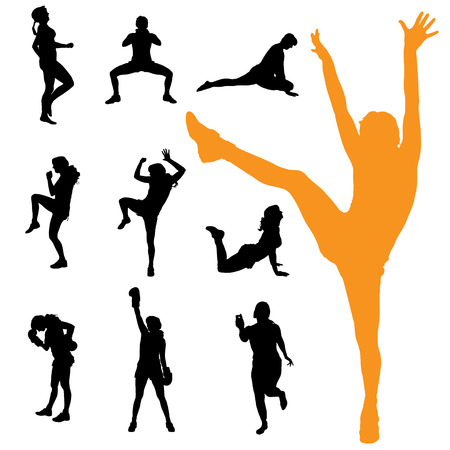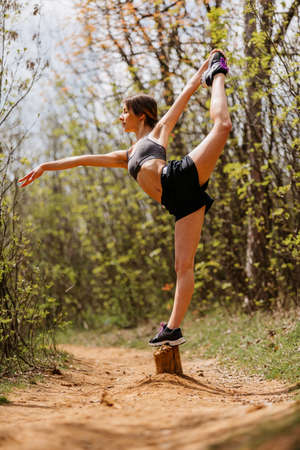The Heartbeat of Dance-Based Workouts
Across the United States, dance-based low-impact workouts are shaking up the fitness scene and redefining what it means to get moving. These routines, inspired by everything from classic jazzercise and Zumba to hip-hop, Latin, and even TikTok trends, are captivating people of all ages and backgrounds. What’s driving their rise? It’s a unique fusion of culture, community, fun, and fitness that makes exercise feel less like a chore and more like a celebration. Americans are gravitating toward these classes not just for the physical benefits but also for the joy and self-expression they bring. Whether you’re stepping into a studio or joining an online class from your living room, dance-based workouts invite everyone to let loose, feel the rhythm, and discover health on their own terms. It’s this blend of movement and music—paired with an inclusive, judgment-free vibe—that’s turning everyday people into passionate participants and making dance-inspired fitness an essential part of modern American life.
2. Why Low-Impact? The Science of Gentle Movement
When it comes to fitness, we often picture high-intensity routines and sweat-drenched sessions, but dance-based low-impact workouts are reshaping the narrative. These gentle movements aren’t just easy on your body—they’re rooted in science and proven to bring holistic benefits, both physically and mentally. Let’s take a closer look at why low-impact dance is capturing attention across America.
The Heart of Low-Impact: Joint Protection
One of the most significant advantages of low-impact dance workouts is their ability to protect your joints. Unlike running or jumping exercises that put repeated stress on knees, hips, and ankles, dance-inspired movements keep you moving without the pounding impact. This makes them ideal for people of all ages and fitness levels, especially those with arthritis or recovering from injuries.
Mood Boosting Effects—Proven by Science
Low-impact dancing doesn’t just benefit your body—it lifts your spirit too. Modern research shows that rhythmic movement triggers endorphin release, lowering stress hormones like cortisol and boosting feelings of joy. The social aspect of group dance classes further enhances these effects, creating a sense of belonging and connection.
Sustainable Wellness for Real Life
What sets dance-based low-impact workouts apart is their sustainability. Because they’re enjoyable and less likely to cause injury, people stick with them long-term. This consistency translates to real health improvements—from better cardiovascular health to increased flexibility and balance.
| Benefit | How Dance-Based Low-Impact Helps | Supporting Research |
|---|---|---|
| Joint Protection | Minimizes impact while maintaining mobility | Journal of Orthopedic & Sports Physical Therapy (2022) |
| Mood Enhancement | Boosts endorphins; reduces anxiety & depression symptoms | Frontiers in Psychology (2020) |
| Sustainability | Encourages consistent participation due to enjoyment | American Journal of Lifestyle Medicine (2019) |
| Total Wellness | Improves heart health, coordination, balance, and social wellbeing | Mayo Clinic Proceedings (2021) |
Dive into dance-based low-impact workouts and you’ll find a path that’s kinder to your body, uplifts your mood, and supports lifelong wellness—one joyful step at a time.

3. Popular Dance Styles: From Zumba to Hip-Hop
Across the United States, dance-based low-impact workouts have stepped into the spotlight, offering communities an exciting and accessible way to stay active. Zumba is perhaps the best-known example—this Latin-inspired cardio dance class fuses salsa, reggaeton, and merengue rhythms with easy-to-follow moves, making it a favorite for people of all ages and fitness levels. Its high-energy music and party-like atmosphere make every session feel like a celebration rather than just exercise.
Another crowd-pleaser is Hip-Hop dance fitness. These classes blend classic hip-hop grooves with simple choreography, creating an inclusive space where participants can channel their inner dancer while getting a solid workout. With playlists that range from old-school beats to contemporary chart-toppers, hip-hop classes help you build coordination and confidence—no prior dance experience required.
Jazzercise has stood the test of time in America’s fitness scene since the 1960s, combining jazz dance, strength training, and Pilates elements. Its upbeat routines are designed to be joint-friendly, accessible for beginners, and adaptable for those seeking more challenge. The retro vibes and supportive community make Jazzercise a go-to for many looking to relive—or discover—the joy of movement.
If you’re drawn to something more fluid, Barre-inspired dance classes blend ballet basics with Pilates and yoga for a full-body burn that’s gentle on the joints. These sessions emphasize balance, flexibility, and mindful movement—perfect for anyone wanting a graceful yet effective approach to fitness.
No matter which style you choose—from Zumba’s infectious rhythms to the expressive power of hip-hop or the elegance of barre—America’s dance-based low-impact workouts offer something for everyone. Each class type brings its own unique energy, sense of community, and adaptability, ensuring that finding your groove is as fun as it is beneficial for your health.
4. No Two Left Feet: Getting Started at Any Age
If you’ve ever thought, “I can’t dance,” you’re not alone. The beauty of dance-based low-impact workouts is that they welcome everyone—regardless of age, background, or coordination level. Many people start with doubts but soon discover a world where movement is about joy, not perfection.
Real-Life Inspiration: Take Ellen, a retired teacher in her late 60s who joined a local Zumba Gold class. She was nervous at first, convinced she’d trip over her own feet. After just a few weeks, Ellen not only kept up but also made friends and found herself laughing more often. Or consider Marcus, a college student recovering from an injury who found that dance-based workouts gave him a way to stay active without putting stress on his joints.
Tips for Easing Into Dance-Based Workouts
| Step | What to Do | Why It Matters |
|---|---|---|
| 1. Start Simple | Choose beginner-friendly classes like line dancing, Zumba Gold, or online tutorials designed for all levels. | Reduces intimidation and helps build confidence. |
| 2. Wear Comfortable Gear | Select flexible clothing and supportive shoes so you can move freely and safely. | Makes it easier to focus on enjoying the movement. |
| 3. Set Realistic Goals | Aim to complete one or two sessions per week and gradually increase as you feel comfortable. | Keeps motivation high without overwhelming yourself. |
| 4. Listen to Your Body | Pace yourself, take breaks as needed, and modify moves to suit your comfort level. | Prevents injuries and ensures a positive experience. |
| 5. Embrace Community | Join group classes or virtual communities for encouragement and accountability. | Makes the journey more fun and less lonely. |
You’re Never Too Old (or Too New)
The greatest thing about dance-based low-impact workouts is their adaptability. Whether you’re eight or eighty, there’s a style and pace for you. Many instructors in the U.S. specialize in inclusive classes that celebrate every body type, ability, and age group. And if you prefer privacy or flexibility, online platforms offer countless options to get started from home at your own pace.
Your First Step: Just Show Up
No need for fancy moves or athletic prowess—just bring your willingness to try something new. Over time, what once felt unfamiliar will become second nature, leaving you with better health and maybe even some new friends along the way.
5. Beyond the Studio: Community, Connection, and Confidence
Dance-based low-impact workouts aren’t just about moving your body—they’re about moving your life forward. Outside the four walls of a studio, these workouts ripple into everyday experiences, weaving new connections and nurturing a sense of belonging. Whether you’re grooving in a local YMCA class or following along with a YouTube instructor, you’ll quickly discover that dance fitness has a way of dissolving boundaries. Everyone is welcome, no matter your age, background, or skill level. This shared rhythm creates a supportive environment where strangers become friends.
At the heart of every dance-based class is the magic of community. The act of moving together—mirroring steps, laughing at missed beats, encouraging each other through every twist and turn—creates real bonds. In many American towns and cities, dance fitness groups host social events, potlucks, or themed workout nights. These gatherings go far beyond burning calories; they spark conversations and foster friendships that last long after the music fades.
The impact on self-esteem is equally powerful. There’s something transformative about mastering a new move or simply letting loose without fear of judgment. For many participants, dance fitness becomes a safe space to express themselves authentically. As confidence grows on the dance floor, it often spills over into daily life—leading to greater self-assurance at work, school, or home. The encouragement from instructors and peers helps everyone celebrate progress, big or small.
Ultimately, dance-based low-impact workouts prove that health isn’t just physical—it’s deeply social and emotional too. The joy of movement blends seamlessly with laughter and camaraderie, creating an uplifting atmosphere that draws people back week after week. So next time you step into a class or press play on your favorite dance workout video, remember: you’re not just building strength—you’re building community and confidence, one beat at a time.
6. Tips for Making Dance Workouts a Lifestyle
Stay Motivated with Mini Goals
Keeping your dance-based low-impact workouts fresh and exciting is key to making them stick. Set small, achievable goals—maybe it’s nailing a new move, dancing for an extra five minutes, or simply showing up three times a week. Celebrate every win, no matter how tiny. Small victories keep you motivated and remind you why you started this joyful journey.
Mix Things Up to Keep It Fun
The beauty of dance fitness is variety. Try different styles: Latin beats on Monday, hip-hop on Wednesday, country line dancing on Friday. Explore local studios, online platforms, or even YouTube channels that bring the energy of American pop culture right into your living room. When you mix things up, boredom doesn’t stand a chance—and your body gets a full range of movement.
Make Dance Part of Your Everyday Routine
Weave dance into your daily life by making it social or practical. Invite friends over for a living room dance-off, join a community class at your local rec center, or turn up your favorite playlist while doing chores. In American homes where schedules are packed, even ten-minute bursts of movement between Zoom calls or before dinner can make a huge difference in mood and health.
Keep It Realistic and Accessible
You don’t need fancy gear or a massive time commitment—just comfy shoes and some space to move. If you’re short on time, do quick routines during TV commercials or before bed. If mobility is an issue, choose seated dance workouts. The goal is to keep moving in ways that feel good for you.
Find Community and Accountability
Sharing your progress with family or friends—whether through group classes, social media challenges, or weekly check-ins—can help you stay accountable and inspired. Many Americans find motivation in belonging to supportive groups where everyone shares their own dance fitness wins and struggles.
Let Joy Lead the Way
Dancing should be fun first and foremost. Choose music that lifts your spirits, moves that feel natural, and environments where you can let loose without judgment. When joy is at the heart of your routine, dance-based low-impact workouts become more than just exercise—they become a lifestyle that brings lasting happiness and health.


